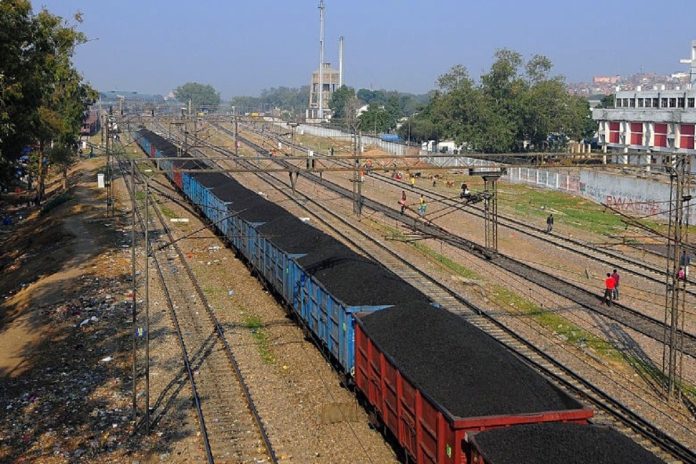Snapshot
The freight loading of the national transporter for the financial year ending on 31 March 2022 stood at 1,418.1 MT (provisional), which is 15 per cent more than the previous best set in FY 2020-21 at 1,233.2 MT.
The Railways new mantra, ‘hungry for cargo’ has brought the desired results with leading by coal and followed by cement, the national transporter for the first time ever breached the 1,400 million tons (MT) goods loading mark in the financial year (FY) 2021-22.
The freight loading of the national transporter for the financial year ending on 31 March 2022 stood at 1,418.1 MT (provisional), which is 15 per cent more than the previous best set in FY 2020-21 at 1,233.2 MT.
The incremental loading of 185 MT has been led primarily by coal with 111 MT growth, followed by cement at 17.2 MT and other goods at 15 MT.
Besides the record growth in freight, the Railways has achieved milestones in various categories including electrification, loco production, laying new line/ doubling/ gauge conversion and also the integration of technology for ensuring safety in the financial year.
The incremental loading of 185 MT with 15 per cent growth is the best ever growth in both absolute and percentage terms. The previous best incremental growth in percentage terms was achieved in the year 1981-82 with 12.9 per cent growth.
According to the Railways, the figures are provisional and might change slightly upon finalisation of statistics.
The previous best incremental loading in absolute terms was 66.1 MT achieved more than a decade ago in the year 2005-06.
Following the mantra, “Hungry For Cargo”, the Railways has made sustained efforts to improve the ease of doing business as well as improve the service delivery at competitive prices which has resulted in new traffic coming to railways from both conventional and non conventional commodity streams.
The customer centric approach and work of Business Development Units backed up by agile policy making helped the Railways towards this landmark achievement.
According to the data, the Railways achieved incremental loading in all commodities except fertilisers where the demand was subdued due to high international prices.
In 2020-21, the coal loading was 542.2 MT which increased to 653.3 MT in 2021-22. The loading of raw material for steel plants including iron ore was 183.7 MT in 2020-21, increasing to 197.2 MT in 2021-22.
Cement and Clinker loadings were 121.2 MT in the previous year which increased to 138.5 MT in the financial year 2021-22. Similarly, 62.8 MT food grains were carried in 2020-21 which increased to 73.4 MT this year.
Fertiliser loading was decreased from 54.1 MT in the previous year to 49.5 MT this year. The year 2020-21 witnessed record electrification of 6,366 route km (RKM). The previous highest electrification was 6,015 RKM during 2020-21.
As of 31 March 2022, out of the 65,141 km of broad gauge (BG) network, 52,247 km has been electrified, which is 80.20 per cent of the total BG network. In New Line/ Doubling/ Gauge Conversion, 2,904 km was achieved against a target of 2400 Km, and 2361 km by 2020-21.
Highest ever electric loco production and induction of 1,110 Locos which include 965 by railway production units, 35 by BHEL and 110 by Madhepura, was achieved in FY 2021-22.
The Railways also achieved the highest earning in scrap sale with Rs 5,316.1 crore, as compared to Rs 4571.4 crore in 2020-21.
In 2021-22, Kavach, the indigenous technology for accident prevention systems was commissioned at 850 km in the rail network.


